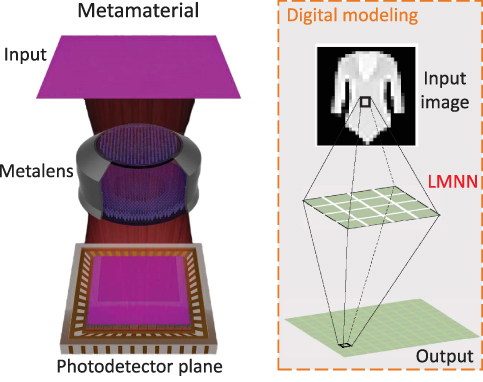References
1LecunY.BoserB.DenkerJ. S.HendersonD.HowardR. E.HubbardW.JackelL. D.1989Backpropagation applied to handwritten zip code recognitionNeural Comput.1541551541–5110.1162/neco.1989.1.4.541
2KrizhevskyA.SutskeverI.HintonG. E.2017Imagenet classification with deep convolutional neural networksCommun. ACM60849084–9010.1145/3065386
3LiQ.CaiW.WangX.ZhouY.FengD. D.ChenM.Medical image classification with convolutional neural network2014 13th Int’l. Conf. on Control Automation Robotics & Vision (ICARCV)2014IEEEPiscataway, NJ844848844–810.1109/ICARCV.2014.7064414
4JhaD.RieglerM. A.JohansenD.HalvorsenP.JohansenH. D.Doubleu-net: A deep convolutional neural network for medical image segmentation2020 IEEE 33rd Int’l. Symposium on Computer-based Medical Systems (CBMS)2020IEEEPiscataway, NJ558564558–6410.1109/CBMS49503.2020.00111
5RonnebergerO.FischerP.BroxT.U-net: Convolutional networks for biomedical image segmentationMedical Image Computing and Computer-Assisted Intervention–MICCAI 2015: 18th Int’l. Conf. Proc. Part III 182015SpringerCham234241234–41/10.1007/978-3-319-24574-4_28
6ChauhanR.GhanshalaK. K.JoshiR.Convolutional neural network (CNN) for image detection and recognition2018 First Int’l. Conf. Secure Cyber Computing and Communication (ICSCCC)2018IEEEPiscataway, NJ278282278–8210.1109/ICSCCC.2018.8703316
7RedmonJ.DivvalaS.GirshickR.FarhadiA.You only look once: Unified, real-time object detectionProc. IEEE Conf. on Computer Vision and Pattern Recognition2016IEEEPiscataway, NJ779788779–8810.1109/CVPR.2016.91
8LiuZ.LinY.CaoY.HuH.WeiY.ZhangZ.LinS.GuoB.Swin transformer: Hierarchical vision transformer using shifted windowsProc. IEEE/CVF Int’l. Conf. on Computer Vision2021IEEEPiscataway, NJ100121002210012–2210.1109/ICCV48922.2021.00986
9WangW.XieE.LiX.FanD.SongK.LiangD.LuT.LuoP.ShaoL.Pyramid vision transformer: A versatile backbone for dense prediction without convolutionsProc. IEEE/CVF Int’l. Conf. on Computer Vision2021IEEEPiscataway, NJ568578568–7810.48550/arXiv.2102.12122
10LiuZ.MaoH.WuC.FeichtenhoferC.DarrellT.XieS.A convnet for the 2020sProc. IEEE/CVF Conf. on Computer Vision and Pattern Recognition2022IEEEPiscataway, NJ119761198611976–8610.1109/CVPR52688.2022.01167
11DingX.ZhangX.HanJ.DingG.Scaling up your kernels to 31 × 31: Revisiting large kernel design in CNNsProc. IEEE/CVF Conf. on Computer Vision and Pattern Recognition2022IEEEPiscataway, NJ119631197511963–7510.48550/arXiv.2203.06717
12LiuS.ChenT.ChenX.ChenX.XiaoQ.WuB.PechenizkiyM.MocanuD.WangZ.
13SimonyanK.ZissermanA.
14HeK.ZhangX.RenS.SunJ.Deep residual learning for image recognitionProc. IEEE Conf. on Computer Vision and Pattern Recognition2016IEEEPiscataway, NJ770778770–810.1109/CVPR.2016.90
15LongJ.ShelhamerE.DarrellT.Fully convolutional networks for semantic segmentationProc. IEEE Conf. on Computer Vision and Pattern Recognition2015IEEEPiscataway, NJ343134403431–40
16PengC.ZhangX.YuG.LuoG.SunJ.Large kernel matters–improve semantic segmentation by global convolutional networkProc. IEEE Conf. on Computer Vision and Pattern Recognition2017IEEEPiscataway, NJ435343614353–6110.48550/arXiv.1703.02719
17WangJ.SunK.ChengT.JiangB.DengC.ZhaoY.LiuD.MuY.TanM.WangX.LiuW.Deep high-resolution representation learning for visual recognitionIEEE Trans. on Pattern Analysis and Machine Intelligence2020Vol. 43IEEEPiscataway, NJ334933643349–6410.1109/TPAMI.2020.2983686
18GeirhosR.RubischP.MichaelisC.BethgeM.WichmannF. A.BrendelW.
19ChengX.WangP.GuanC.YangR.Cspn++: Learning context and resource aware convolutional spatial propagation networks for depth completionProc. AAAI Conf. on Artificial Intelligence2020Vol. 34AAAIPalo Alto, CA106151062210615–2210.1609/aaai.v34i07.6635
20XiaoH.RasulK.VollgrafR.
21CoatesA.NgA.LeeH.An analysis of single-layer networks in unsupervised feature learningProc. Fourteenth Int’l. Conf. on Artificial Intelligence and Statistics. JMLR Workshop and Conf. Proc.2011JMLRCambridge, MA215223215–23
22CholletF.Xception: Deep learning with depthwise separable convolutionsProc. IEEE Conf. on Computer Vision and Pattern Recognition2017IEEEPiscataway, NJ180018071800–710.1109/CVPR.2017.195
23SzegedyC.LiuW.JiaY.SermanetP.ReedS.AnguelovD.ErhanD.VanhouckeV.RabinovichA.Going deeper with convolutionsProc. IEEE Conf. on Computer Vision and Pattern Recognition2015IEEEPiscataway, NJ191–9
24SzegedyC.VanhouckeV.IoffeS.ShlensJ.WojnaZ.Rethinking the inception architecture for computer visionProc. IEEE Cconf. on Computer Vision and Pattern Recognition2016IEEEPiscataway, NJ281828262818–26
25HuH.ZhangZ.XieZ.LinS.Local relation networks for image recognitionProc. IEEE/CVF Int’l. Conf. on Computer Vision2019IEEEPiscataway, NJ346434733464–73
26SunL.PanJ.TangJ.Shufflemixer: An efficient convnet for image super-resolutionAdvances in Neural Information Processing Systems (NeurIPS 2022)2022Vol. 35173141732617314–26
27IandolaF.MoskewiczM.KarayevS.GirshickR.DarrellT.KeutzerK.
28HuangG.LiuS.Van der MaatenL.WeinbergerK. Q.CondenseNet: An efficient densenet using learned group convolutionsProc. IEEE Conf. on Computer Vision and Pattern Recognition2018IEEEPiscataway, NJ275227612752–6110.48550/arXiv.1711.09224
29HowardA. G.ZhuM.ChenB.KalenichenkoD.WangW.WeyandT.AndreettoM.AdamH.
30ZhangX.ZhouX.LinM.SunJ.Shufflenet: An extremely efficient convolutional neural network for mobile devicesProc. IEEE Conf. on Computer Vision and Pattern Recognition2018IEEEPiscataway, NJ684868566848–5610.1109/CVPR.2018.00716
31ChengY.WangD.ZhouP.ZhangT.Model compression and acceleration for deep neural networks: The principles, progress, and challengesIEEE Signal Processing Magazine2018Vol. 35IEEEPiscataway, NJ126136126–3610.1109/MSP.2017.2765695
32VanhouckeV.SeniorA.MaoM. Z.Improving the speed of neural networks on CPUsDeep Learning and Unsupervised Feature Learning Workshop2011NIPSSan Diego, CA
33ChenW.WilsonJ.TyreeS.WeinbergerK.ChenY.Compressing neural networks with the hashing trickInt’l. Conf. on Machine Learning2015PMLRCambridge, MA228522942285–94
34SrinivasS.BabuR. V.
35HanS.PoolJ.TranJ.DallyW.Learning both weights and connections for efficient neural networkAdvances in Neural Information Processing Systems2015Vol. 28NeurIPSSan Diego, CA
36HeY.ZhangX.SunJ.Channel pruning for accelerating very deep neural networksProc. IEEE Int’l. Conf. Computer Vision2017IEEEPiscataway, NJ139814061398–40610.1109/ICCV.2017.155
37GongY.LiuL.YangM.BourdevL.
38WuJ.LengC.WangY.HuQ.ChengJ.Quantized convolutional neural networks for mobile devicesProc. IEEE Conf. on Computer Vision and Pattern Recognition2016IEEEPiscataway, NJ482048284820–810.1109/CVPR.2016.521
39LiuZ.WangY.HanK.ZhangW.MaS.GaoW.Post-training quantization for vision transformerAdvances in Neural Information Processing Systems (NeurIPS 2021)2021Vol. 34280922810328092–103
40FangJ.ShafieeA.Abdel-AzizH.ThorsleyD.GeorgiadisG.HassounJ. H.Post-training piecewise linear quantization for deep neural networksComputer Vision–ECCV 2020: 16th European Conf. Proc., Part II 162020SpringerCham698669–8610.1007/978-3-030-58536-5_5
41LiY.GongR.TanX.YangY.HuP.ZhangQ.YuF.WangW.GuS.
42LiJ.WenY.HeL.SCConv: Spatial and channel reconstruction convolution for feature redundancyProc. IEEE/CVF Conf. on Computer Vision and Pattern Recognition2023IEEEPiscataway, NJ615361626153–6210.1109/CVPR52729.2023.00596
43ZhouG.AndersonD. Z.1994Acoustic signal recognition with a photorefractive time-delay neural networkOpt. Lett.19655657655–710.1364/OL.19.000655
44LargerL.SorianoM. C.BrunnerD.AppeltantL.GutiérrezJ. M.PesqueraL.MirassoC. R.FischerI.2012Photonic information processing beyond turing: an optoelectronic implementation of reservoir computingOpt. Express20324132493241–910.1364/OE.20.003241
45DuportF.SchneiderB.SmerieriA.HaeltermanM.MassarS.2012All-optical reservoir computingOpt. Express20227832279522783–9510.1364/OE.20.022783
46JutamuliaS.YuF.1996Overview of hybrid optical neural networksOpt. Laser Technol.28597259–7210.1016/0030-3992(95)00070-4
47PaquotY.DuportF.SmerieriA.DambreJ.SchrauwenB.HaeltermanM.MassarS.2012Optoelectronic reservoir computingSci. Rep.228710.1038/srep00287
48WoodsD.NaughtonT. J.2012Photonic neural networksNature Phys.8257259257–910.1038/nphys2283
49HughesT. W.MinkovM.ShiY.FanS.2018Training of photonic neural networks through in situ backpropagation and gradient measurementOptica5864871864–7110.1364/OPTICA.5.000864
50FangY.SunM.2015Nanoplasmonic waveguides: Towards applications in integrated nanophotonic circuitsLight Sci. Appl.4e294e294e294–10.1038/lsa.2015.67
51ShenY.HarrisN. C.SkirloS.PrabhuM.Baehr-JonesT.HochbergM.SunX.ZhaoS.LarochelleH.EnglundD.SoljacicM.2017Deep learning with coherent nanophotonic circuitsNature photonics11441446441–610.1038/nphoton.2017.93
52OvchinnikovY. B.MüllerJ.DoeryM.VredenbregtE.HelmersonK.RolstonS.PhillipsW.1999Diffraction of a released bose-einstein condensate by a pulsed standing light wavePhys. Rev. Lett.8328410.1103/PhysRevLett.83.284
53LinX.RivensonY.YardimciN. T.VeliM.LuoY.JarrahiM.OzcanA.2018All-optical machine learning using diffractive deep neural networksScience361100410081004–810.1126/science.aat8084
54GeorgeJ.AminR.MehrabianA.KhurginJ.El-GhazawiT.PrucnalP. R.SorgerV. J.Electrooptic nonlinear activation functions for vector matrix multiplications in optical neural networksSignal Processing in Photonic Communications2018Optica Publishing GroupWashington, DCSpW4G–310.1364/SPPCOM.2018.SpW4G.3
55MiscuglioM.MehrabianA.HuZ.AzzamS. I.GeorgeJ.KildishevA. V.PeltonM.SorgerV. J.2018All-optical nonlinear activation function for photonic neural networksOpt. Mater. Express8385138633851–6310.1364/OME.8.003851
56DingX.ZhangX.MaN.HanJ.DingG.SunJ.RepVGG: Making VGG-style convnets great againProc. IEEE/CVF Conf. on Computer Vision and Pattern Recognition2021IEEEPiscataway, NJ137331374213733–42
57KabirH. D.AbdarM.KhosraviA.JalaliS. M. J.AtiyaA. F.NahavandiS.SrinivasanD.SpinalNet: Deep neural network with gradual inputIEEE Transactions on Artificial Intelligence2022IEEEPiscataway, NJ116511771165–7710.1109/TAI.2022.3185179

 Find this author on Google Scholar
Find this author on Google Scholar Find this author on PubMed
Find this author on PubMed
 Open access
Open access